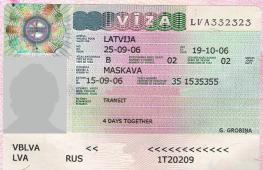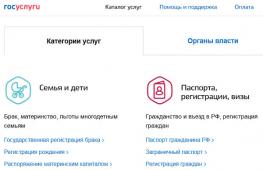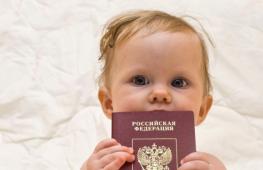Queue at the border of russia with estonia
The most convenient way to get to Estonia from Russia is by car, bus or train. Also, there are always tickets for airplanes and ferries on sale (the second option is relevant primarily for those who are in St. Petersburg). But so that you do not have any difficulties at customs, you need to have certain documents with you. We will tell you how to overcome the queue at the border with Estonia, whether it is possible to simplify the verification process and what papers you need to issue if you take pets with you.

So, if you are planning to travel from Russia to Estonia by bus, train, ferry or plane, then surely contact either a travel agency or a visa center. You can, of course, book tickets and hotel rooms yourself. It is even easier to cross the border if you are invited to visit by relatives living in the EU. One way or another, to make such a journey, you do not need to delve into the subtleties. The main thing is to have the following documents with you:
- foreign passport (at least two free pages, validity period - at least three months from the date of the end of the planned trip);
- open national or Schengen visa;
- a valid medical insurance policy.
One way or another, in order to show documents at the port, airport or train station, there will be no problems. The only exception is citizens who are banned from leaving the Russian Federation.
But if you travel to Estonia in your own vehicle, the matter becomes much more complicated. You need to prepare additional documents, put your car or motorcycle in proper shape, choose the least congested route, following the situation at the Estonian border online or with the help of your friends. However, if you do not worry, correctly draw up an action plan and follow it, you will get to the point of arrival on time.

Where to queue at the Estonian border
There are few border points. If you are planning to travel by car from Russia, and not transit through Latvia, there are three places available to you where you can “talk” with the immigration officers. For convenience, checkpoints on the border with Estonia are shown in the table below.
| Item name | Distance from Moscow | Distance from St. Petersburg | Capacity (person per 24 hours) | Basic information |
|---|---|---|---|---|
| Ivangorod-Narva | 780 km | 120 km | 7 000 | Address: Leningrad Region, Ivangorod, Kingiseppskoe shosse, 8. The nearest gas stations are Neste, Lukoil. |
| Kunichina Gora-Koidula | 730 km | 330 km | 2 000 | Address: Pskov region, Pechora region, village. Kunichina Gora. The nearest gas stations are Surgutneftegaz, Lukoil. |
| Shumilkino-Luhamaa | 730 km | 340 km | 4 000 | Address: Pskov region, Pechora region, Panikovskaya Volost, village. Shumilkino. The nearest gas stations are Surgutneftegaz, PTK, Aris. |
Each of the above points works around the clock, 365 days a year. Shopping lovers will be delighted to find Duty Free shops and Tax Free refund systems at the border. Drivers of large vehicles will not be offended either: each of the points is considered a cargo-passenger one.
The excitement on the eve of the New Year holidays
Registration at the border with Estonia for motorists usually takes a little time, but there is one exception: New Year's holidays are a time of excitement among tourists, as well as relatives of people living in the EU. As a result, the queue can stretch for 8 hours or even more - and this is in the normal mode: from time to time people are faced with an emergency and spend almost half a day at the border. So, in the winter of 2015, one of the checkpoints required urgent repairs: travelers are still discussing this event on Russian forums. In addition to the New Year holidays, the time for the accumulation of Russian cars and buses at the border is:
- May holidays (May 1-10);
- November holidays (November 1-4);
- last week of summer.
 Long queues for entry begin to gather at 8 am - cars are piling up until noon. As for the queue to leave Estonia for Russia, the most difficult hours on such days are from 14:00 to 18:00. But this does not mean that the long-awaited trip should be postponed! There are several ways to reduce the wait:
Long queues for entry begin to gather at 8 am - cars are piling up until noon. As for the queue to leave Estonia for Russia, the most difficult hours on such days are from 14:00 to 18:00. But this does not mean that the long-awaited trip should be postponed! There are several ways to reduce the wait:
- watch an online broadcast from surveillance cameras installed at the border, and, depending on what you see, adjust the route;
- read the comments of travelers on the Border Online website and ask questions about the situation at a particular checkpoint;
- use toll roads;
- book a place in the queue online.
If you are entering an electronic queue, please note that you need to register on the site at least three hours in advance. It is better to take time with a margin, since the immigration officers will only take 15 minutes to complete the application. However, first things first.
Crossing the border and booking a place in the queue
The electronic queue at the Estonian border is available to absolutely all guests who are going back to Russia. But the reservation of a place for entry is still available only to those who want to get to Estonia through the "Kunichina Gora-Koidula" checkpoint. You can register online, as already mentioned, at least three hours before the appearance, but you don't have to worry about the upper limit. Book your pass at least a month in advance! This is especially true for those who are going to Estonia for the holidays - electronic coupons can be “disassembled” even three weeks before the chosen date.
To book a place in the queue for crossing the border from Russia to Estonia, you need to enter the GoSwift electronic queue system, select a date and set your hour, and then pay for the service. Fortunately, booking a time is not the most expensive pleasure. Even owners of D-category trucks pay no more than 14 € for a pass.

Additional information for car owners
As we have already found out, crossing the Russia-Estonia border by car is not easy for Russians. In addition to the subtleties listed above (how to enter the electronic queue, what documents to prepare), a person who is going to drive a car needs to deal with some nuances. Before leaving Russia, make sure you have:
- international law;
- technical passport of the vehicle;
- a document confirming that the car or motorcycle is your property;
- international policy of compulsory vehicle insurance - the so-called "green card".
What is a green card is worth telling in more detail. This, as you might guess, is not about a visa to America, but about a special document that will come in handy in the event of an accident at the border. You can issue this policy right at the border (insurance companies are located near the checkpoint). But it is better to play it safe and deal with the formalities in advance by contacting your “home” office in your own city. This way you will save:
- time - queues are far from always lining up, and you will have to spend at least 20 minutes to issue a policy instead of driving right away;
- money - border insurance companies provide services at inflated prices;
- nerves - you must admit that it is much more pleasant to go abroad, knowing that you have already settled all the formalities.
One more subtlety concerns those who “pereobul” the car in studded tires. When driving to Estonia in this form, make sure that it is officially authorized by the Estonian Highway Administration. Usually, from November to March, there are no problems with winter tires, and yet the terms are negotiated separately each time.
Crossing the Estonian border by car Narva - Ivangorod checkpoint: Video
Crossing the border with privileges
Alas, crossing the border between Russia and Estonia is not a quick business for motorists. However, if there are valid reasons to enter the country urgently, you can announce them in advance - then you will be allowed out of the general queue. Of course, such reasons must be confirmed by presenting documents, certificates, receipts. But immigration officials will certainly treat you with understanding if you:
- need urgent medical attention;
- must visit a seriously ill relative or attend a funeral;
- you are late for a plane, train or ferry and can show the ticket you have already purchased (or at least confirm that you have booked a seat online).
Good reasons can apply to all walks of life. The main thing is to have documents proving that due to idle time in the queue, you can face real problems. The following categories of travelers have even greater advantages:
- diplomats, consuls, members of international delegations and persons accompanying them;
- drivers delivering perishable goods;
- motorcyclists (only vehicles of categories A and A1 are taken into account);
- people who bring pets with them.
If you bring pets with you
As mentioned above, crossing the border with Estonia with pets will help you overcome the milestone faster, but this will require serious preparation. Firstly, some animals must be vaccinated, and secondly, the owner should take the relevant documents with him. A simplified registration system works if you are traveling with:
- cat;
- dog;
- ferret;
- invertebrate (this category includes spiders, snails, millipedes and other exotic pets, except bees, bumblebees and crustaceans);
- an amphibian animal (most often these are newts and frogs);
- reptile (turtles, snakes, chameleons, lizards);
- rodent (rabbits, hamsters, rats);
- decorative bird (canaries, goldfinches, parrots and some others). If you have an owl or a crow, it is better not to risk it and declare your pet to the Estonian embassy before the trip.
You do not need additional documents if the animals are more than 6 months old, they are included in the list presented above, and you are bringing with you up to five animals and birds. Otherwise, the owner must issue documents that meet the requirements for the commercial movement of animals.
Naturally, if your goal is animal breeding or participation in exhibitions, you will have to get hold of such papers in any case. But if you just don't want to leave your pet alone at home, you will need:

Don't risk staying home due to documentation errors. If your pets are considered exotic, check all the travel requirements before signing up at the Estonian border. You can ask your questions by visiting the official website of the Estonian Police and Border Guard Board.




